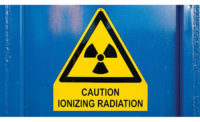When your feet hurt, everything hurts.
Physicians hear this regularly from patients. In fact, research indicates about 75 percent of adults will complain of sore feet at some point. When patients ask why the pain, there are any number of reasons. Tired feet in and of itself is not a medical condition, though it can lead to medical problems. This article focuses the role proper industrial footwear plays in reducing the hurt of tired or fatigued feet.
A major reason why your feet can hurt is the shoes you wear at work all day. Many shoes do not provide the proper support for your feet; insufficient support in the arch of the shoe can lead to a collapsing arch. You should also consider the outer-sole or the bottom of the shoe as this part of the shoe (outer-sole) may not have enough cushion to absorb the force of walking on hard floor surfaces. Of course fit is important, too. Wearing shoes that are too small, too large, too wide or too narrow can contribute to tired feet, foot pain, and body fatigue.
Time on your feet
According to research, 75 percent of the world’s working population spend much of their day at work on their feet – in industries such as agriculture, construction, warehousing or retail. Prolonged standing at work can also be associated with health problems – including tiredness, backaches, bunions, leg cramps, and excess pressure on joints, which can all affect job performance and cause significant discomfort. A new study published in the journal Human Factors suggests that, over time, this type of sustained muscle fatigue can also result in health consequences.
Think about the strain that too much weight and movement puts on feet. Aside from the pressure put on feet by walking or standing all day, consider the fact that the U.S. Centers for Disease Control and Prevention (CDC) reports 37.9 percent of U.S. adults age 20 and older are obese. And overweight and obese adults account for 70.7 percent of the U.S. population age 20 and older. During a typical day, people spend about four hours on their feet and take 8,000 - 10,000 steps. This means feet support a combined force equivalent to several hundred tons every day. That’s a lot of weight for the foot, a complex structure of 26 bones and 33 joints, layered with an intertwining web of more than 120 muscles, ligaments, and nerves.
Impact of each step
Because your feet are very small compared with the rest of your body, the impact of each step exerts tremendous force upon them. This force is about 50 percent greater than your body weight. An estimated 120,000 job-related foot injuries occur every year. A number of foot problems -- including arthritis of the foot and ankle, toe deformities, pinched nerves between the toes, plantar fasciitis, adult-acquired flat foot, and tarsal tunnel syndrome -- have been attributed to the repetitive motions of walking long distances or standing for many hours at work.
Traction matters
Another consideration: reducing slips, trips, and falls should be part of your lightweight safety footwear purchasing decision. Use of specific outsole materials and design of outsole tread pattern are two key criteria for producing slip-resistant footwear, says Robert Petersen, product manager for Tingley® Rubber Corporation. Request test data from manufacturers showing the coefficient of friction (COF) for their footwear as tested per the ASTM F2913 - Standard Test Method for Measuring the Coefficient of Friction for Evaluation of Slip Performance of Footwear and Test Surfaces/Flooring Using a Whole Shoe Tester, he advises.
Benefits of lightweight
Lightweight footwear is anti-fatigue footwear, says Petersen. He says military and ergonomic studies show that every pound reduced in footwear weight is equal to a five pound reduction in weight off your back or five percent less energy expended.
Lightweight footwear uses materials that are either inherently light or that can be modified in the manufacturing process to be lighter in weight, says Petersen. For example, lightweight ethylene vinyl acetate (EVA) foam can be sandwiched into the midsole of a running shoe. Footwear can also be produced using direct injection expanded foam molding, typically polyurethane or EVA, injected into a footwear mold, says Petersen. The injection foam process introduces air into the polymer, reducing the weight. Added benefits include increased cushioning and self-insulating properties resulting from the trapped air.
Building-in protection
Lighter weight footwear is obviously more comfortable, but how is it constructed to be durable? The injection foam molding process can be manipulated in many ways to maintain lightweight properties while ensuring the footwear produced meets or exceeds safety performance requirements, says Petersen. Using high-quality polymers, the process can incorporate a lesser amount of air for the outsole of the footwear, while maintaining an optimal level of air for the upper so that chemical-resistance and durability can be maintained.
Lightweight, composite safety toes add protection. They can be placed into the mold before foam injection to fully encapsulate the toe into the footwear, says Petersen. Lightweight puncture-resistant plates can be embedded in the midsole to protect against sharp objects from puncturing the sole of the wearer’s foot. Specific functionality such as static dissipative (SD), or electrical hazard protection (EH) can be engineered into the footwear by the selection of polymers, addition of other specific compounds, and manipulating of the injection foam molding process, Petersen reports.
Keep in mind that lightweight does not mean light-duty. OSHA stipulates that protective footwear must comply with ASTM F2413. According to Petersen, this standard defines test method procedures and performance specification minimums for protecting toes against impact injuries (such as falling objects) and compressive injuries (such as a pallet jack rolling over the foot). Petersen notes ASTM F2413 also provides performance specification minimums for metatarsal guard protection, puncture resistance, electrical hazard, and other forms of protection.
For more information about Tingley® Rubber products,
call 800-631-5498; www.tingleyrubber.com




